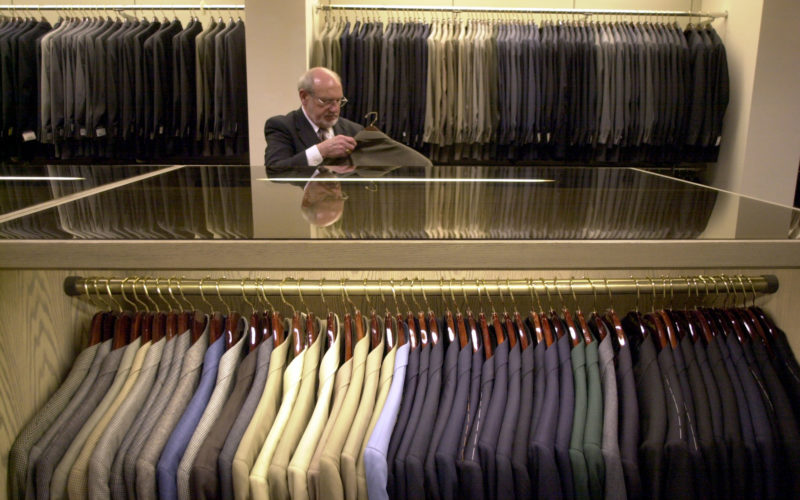Q. I’m a lawyer whose office has always been dressier than most; we never descended to “business-casual.” Of course, these days we’re not as formal as we used to be; this is true of our boss who dresses well and others who care less about what they wear.
This level of dressiness leads to some uncertainty. My favorite suit is a very dark navy single-breasted with peak lapels (instead of the usual notch lapels). I always wore it with a white, French cuff shirt and a sharp dark tie. Now it seems too far from today’s more relaxed looks. If I want to keep it as part of my suit rotation, what can I do to “tone it down” a bit?
A. I understand your concern. The navy suit you describe is formal to the extreme. The only elements that would make it more dressy and even less current would be if it were a pinstripe or if it were double-breasted. The unique peak lapels (uncharacteristic, but not at all wrong) do move the suit up a notch – and set it apart – from the less dressy air of most single-breasted suits. In actual litigation before a court, this sort of attire might still be appropriate.
But in normal day-to-day activities, the best way to tone down the formality of your suit would be with the accessories. The rule is: The darker the suit and tie and the lighter the shirt, the dressier the look. Thus, a white shirt and dressy dark tie (perhaps with tiny white dots known as a “pindot”) are the expected accompaniments to your dapper navy suit. What you want to do is soften the boardroom look; the most basic method is wearing a non-white shirt in light blue, the palest pink, or (if you can find this elusive item) ivory or cream color. Any of the small shirting patterns such as a tattersall or a herringbone weave would work nicely. A subtle stripe, such as a hairline, or a bold Bengal stripe could also make a dark suit less imposing. Either French cuffs or barrel (button) cuffs would be fine, but if you choose French cuffs, then avoid any flamboyant cuff links.
The tie you select can make a big difference. Instead of an elegant dark pindot or a bold red stripe, try a muted shade – such as burgundy or rose or a not-too-bright blue – in a quiet pattern. You should avoid oversized paisleys or splashy florals. “Subtle” is the effect you are going for. Anything that is too out of the spirit of the elegant suit would ruin the tasteful effect you have so thoughtfully chosen. Needless to say, today’s open-at-the-neck tieless look is not only modern, but it could be your easiest option. Just be sure you are not the only one in the room to go without a tie.
Incidentally, while watching the prolonged election returns on TV, I was intrigued to notice how many of the news guys were wearing neckties in some variation of purple. There were solid purple ties; there were all types of blue-and-red ties with small stripes or with small all-over patterns (which again suggested purple). Whether this was a deliberate attempt at nonpartisanship, straddling the fence between red states and blue states, I do not know. Or, whether it was all in my head, I’m not sure.
Finally, if you like the look of a pocket square tucked into your breast pocket, I suggest you choose a softly arranged patterned silk rather than a stiff, precisely folded white linen handkerchief.
You are wise to consider and defer to your boss’s taste. It is smart not to out-flash him. But, if your usual style of dress is to choose quietly fine fabrics and exquisite tailoring, rest assured that the guys in your office who normally do not dress particularly well will probably not recognize your subtle choices. You may be surprised to learn that the average non-caring dresser may never even notice that your suit has peak lapels.
Please send your men’s dress questions and comments to MALE CALL: Lois.Fenton@prodigy.net









